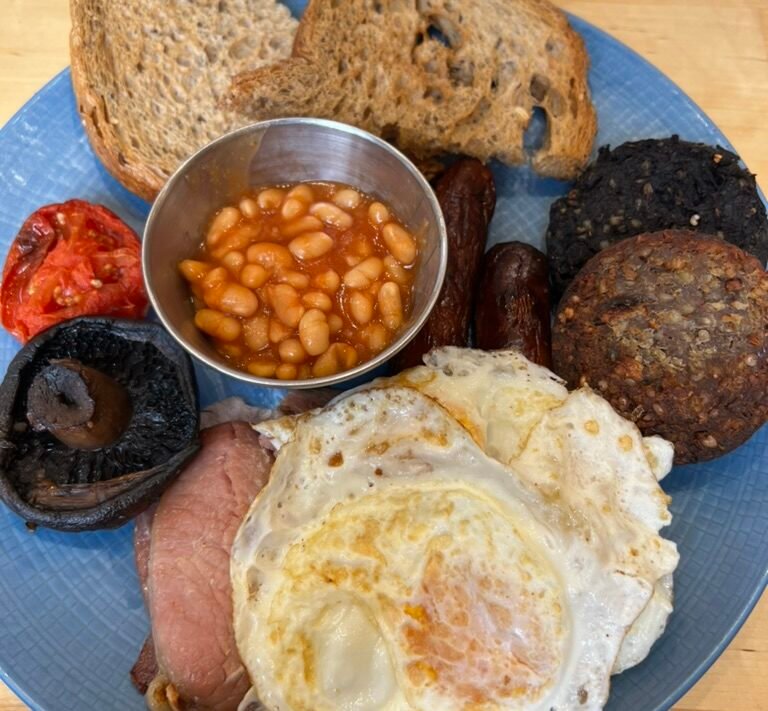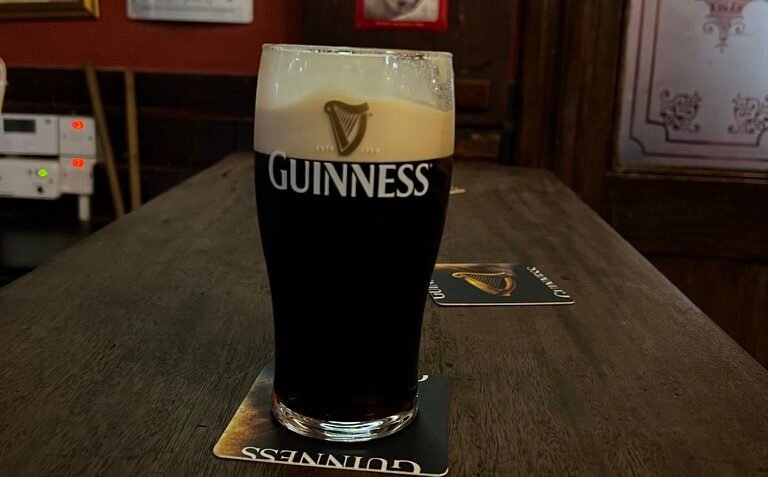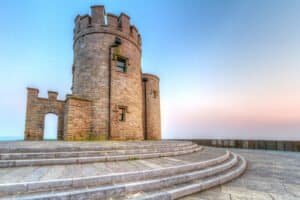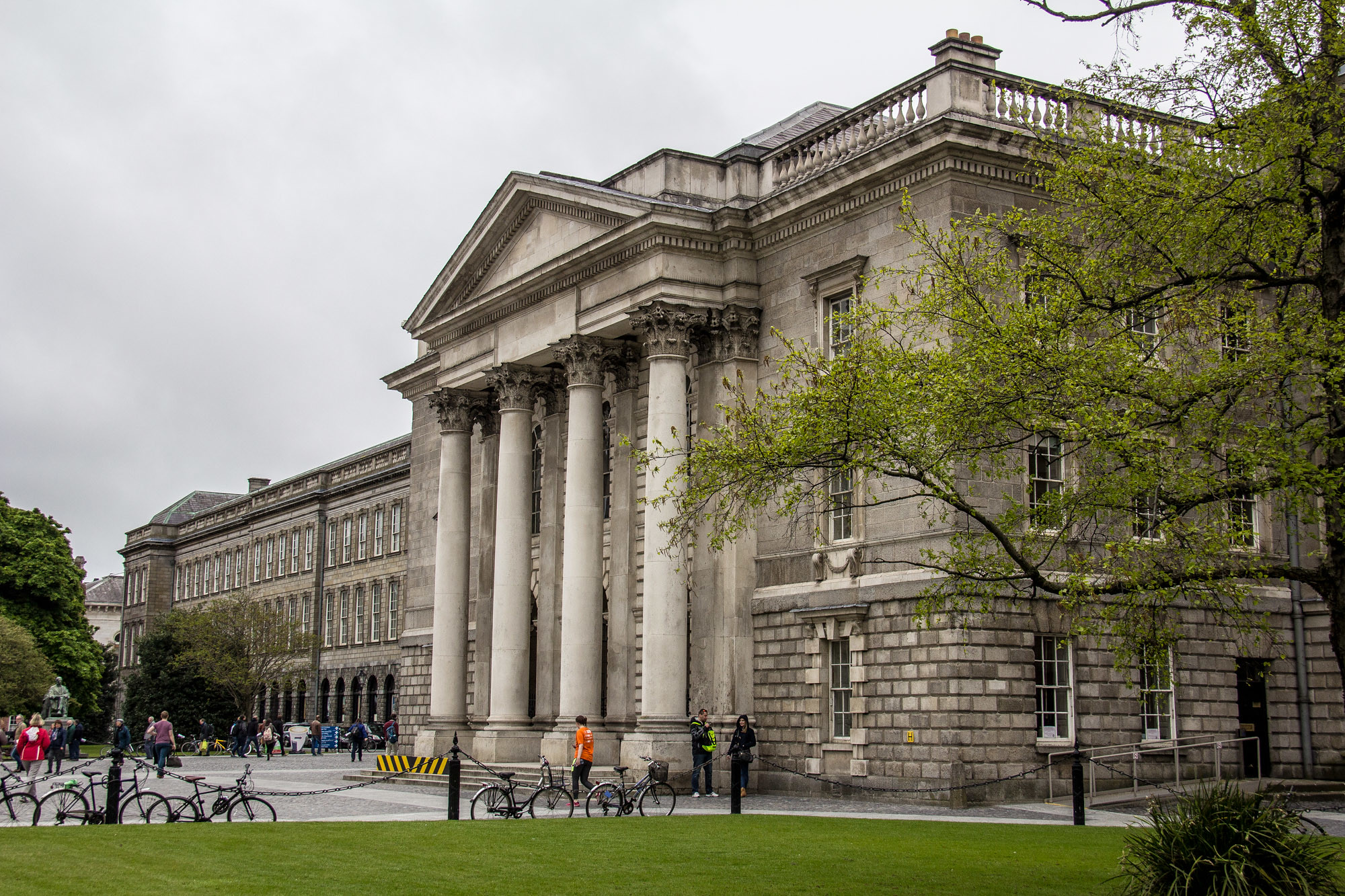Doolin Cave
Visiting Doolin Cave, Ireland Doolin Cave, also known as Pol an Ionain, is a captivating destination for enthusiasts of natural wonders. Situated near Doolin in County Clare,
Welcome to our Ireland travel guide, your tool to planning an itinerary to Ireland, the enchanting Emerald Isle. Ireland is one of our favorite countries because the people are so nice, the air is fresh and it a whole lot of fun! It’s also a great intro country to international travel because it’s safe and they speak English. Whether you’re enticed by amazing landscapes, adventure, historic castles, or the warm hospitality of the Irish people, this Ireland travel guide has all the insider tips you need for an unforgettable trip. Wondering when to visit for the best weather or cultural events? Curious about the finest accommodations, from cozy B&Bs to luxurious hotels? Look no further—our comprehensive guide covers it all. Don’t forget to use our free online travel planner tool as well!
From the bustling streets of Dublin to the serene cliffs of Moher, our Ireland travel guide will help you identify both the must-see destinations and hidden gems. Discover top attractions, delicious local cuisine, and cultural experiences that capture the essence of Ireland. Read on with this Ireland Travel Guide to plan your dream journey to this captivating country.
When planning your trip to the Ireland, timing can significantly enhance your experience. With distinct seasons offering unique charms, Ireland is a year-round destination. Here’s an Ireland travel guide for choosing the best time to visit:
Spring (March to May)
Spring is a delightful time for exploring Ireland. The countryside is blanketed in vibrant blossoms, and the weather is mild, making it perfect for outdoor activities and sightseeing. Plus, it’s before the peak tourist season, so you’ll enjoy fewer crowds.
Summer (June to August)
For those who relish warm weather and lively festivals, summer is the prime time to visit. This season boasts the longest days, allowing for extended exploration. Key events like the Galway International Arts Festival provide a cultural feast. However, make sure to book in advance, as it’s the busiest tourist period.
Autumn (September to November)
Autumn in Ireland is draped in golden foliage, offering picturesque landscapes and fewer tourists. The weather remains pleasant, and destinations like the Wild Atlantic Way and Giant’s Causeway are at their scenic best. It’s also an ideal time to include whisky distillery tours in your vacation itinerary ideas.
Winter (December to February)
Winter offers a tranquil escape with fewer visitors and a cozy atmosphere. Snow-capped mountains and festive celebrations add a touch of magic. While some attractions might close, cities like Dublin and Belfast remain vibrant, offering robust cultural experiences.
Your Ireland travel itinerary should reflect your interests and preferences, with each season providing distinct opportunities to tailor to your vacation itinerary ideas, whether you seek bustling festivals or tranquil countryside retreats.
When planning a trip to Ireland there are several easy ways to reach this stunning island, as it is well connected. Depending on your location and preferences. Whether you prefer to fly, sail, or go by land, here’s everything you need to know.
Flying is the quickest and most convenient way to arrive in Ireland. The country has multiple international airports, each well-connected to various parts of the world. Luckily Ireland is home of RyanAir so it’s super simple to get here from anywhere in Europe really.
If you prefer a scenic route, consider traveling by ferry. Several companies provide ferry services to Ireland from the United Kingdom and continental Europe.
Another option is to combine train and ferry travel. This can be a relaxing and cost-effective way to reach Ireland, especially from the UK.
Exploring Ireland is a delightful experience, thanks to its well-connected transportation network. Whether you’re arriving from abroad or planning domestic travel, Ireland offers various modes of transportation to suit every traveler’s needs. This Ireland travel guide will assist you in choosing the best way to get around the Emerald Isle.
Getting to Ireland by air is the fastest and often the most convenient option, especially if you’re coming from overseas. There are several international airports where you can land, and they also serve as hubs for domestic flights.
Pros:
Cons:
Ireland’s rail system is extensive and offers a scenic way to travel between major cities and towns. Irish Rail (Iarnród Éireann) is the primary provider for rail services.
Pros:
Cons:
Bus travel is one of the most economical ways to get around Ireland. Buses cover almost all parts of the country and are operated by multiple providers.
Pros:
Cons:
Renting a car gives you the freedom to explore Ireland at your own pace. Multiple rental companies offer services at airports and within city centers.
Pros:
Cons:
For the eco-conscious traveler or the adventure seeker, renting a bicycle can be a unique way to explore Ireland, particularly its scenic countryside and charming towns.
Pros:
Cons:
By assessing the pros and cons of each transportation mode, you can choose the best way to navigate through Ireland based on your preferences. This comprehensive Ireland travel guide aims to make your journey across Ireland seamless and enjoyable.
In this part of the Ireland Travel Guide, where we highlight the essential foods and drinks you should try when visiting the Emerald Isle. From hearty stews to creamy pints, Ireland offers a culinary experience that you won’t soon forget.


From these delicious dishes to exquisite drinks, our Ireland Travel Guide ensures you won’t miss out on the true flavors of Ireland.
If you’re planning a trip to the Emerald Isle, our Ireland Travel Guide is here to ensure you have a memorable and smooth experience. From practical advice to local customs, these Ireland Travel Tips will help you make the most of your visit.
If you’re traveling on a budget, hostels are an excellent choice. Prices can range from $20 to $40 per night for a dorm bed. Budget hotels and guesthouses typically cost between $50 and $80 per night for a private room. Airbnb options can also be found in this range if you book well in advance.
For a more comfortable stay, mid-range hotels and bed and breakfasts are widely available. Expect to pay between $80 and $150 per night. These accommodations usually offer better amenities and a more personalized experience. Booking.com and other travel sites often feature competitive rates for these options.
If you’re looking for luxury, Ireland boasts numerous high-end hotels and castles that offer exceptional services and amenities. Prices range from $200 to $500 per night or more, depending on the season and location. These places often provide unique experiences that can make your trip unforgettable.
Eating on a budget is possible, with many cafes, fast food options, and takeaways that offer meals for under $10. A hearty Irish breakfast can cost between $7 and $12. Grocery shopping and cooking your meals is also a viable option for those staying in hostels or Airbnb accommodations.
Mid-range dining will generally set you back about $15 to $30 per meal. Pubs serve hearty meals like fish and chips, bangers and mash, and Irish stew in this price range. Restaurants offering international cuisine also fit within this budget.
For a high-end dining experience, expect to pay $50 to $100 per person at top-tier restaurants. Michelin-starred establishments and exclusive dining experiences can be pricier, often exceeding this range. These venues provide exquisite cuisine and top-notch service.
Traveling around Ireland offers multiple options depending on your needs and budget. Public transportation, such as buses and trains, is both reliable and affordable. A one-way bus ticket within a city costs around $2 to $3, while intercity bus fares range from $10 to $30. Train travel is slightly more expensive, with fares usually between $30 to $70 for intercity journeys.
Renting a car provides more flexibility and can cost about $30 to $70 per day, excluding fuel. Fuel prices average about $1.60 per liter, or approximately $6 per gallon. Keep in mind that driving is on the left side of the road.
Taxi and rideshare services like Uber are available in larger cities. Typical taxi fares start at $4 with an additional $1.60 per kilometer. For short rides, you might pay around $10 to $20.
Ireland is rich in cultural and historical attractions, many of which are free or low-cost. Museums in Dublin, such as the National Museum of Ireland, often provide free entry. Visiting historic sites like the Cliffs of Moher or the Giant’s Causeway has entrance fees ranging from $5 to $15.
Guided tours and experiences, such as visiting Blarney Castle or taking a distillery tour, generally cost between $15 and $30. Multi-day tours exploring various parts of the country can range from $200 to $600, depending on the duration and inclusions.
Purchasing a Heritage Card from Heritage Ireland, costing around $45, grants you unlimited access to a wide range of heritage sites across the country. This can be a cost-effective option if you plan to visit multiple attractions.
Visiting Doolin Cave, Ireland Doolin Cave, also known as Pol an Ionain, is a captivating destination for enthusiasts of natural wonders. Situated near Doolin in County Clare,
Overview of Burren National Park Burren National Park, located in County Clare, Ireland, is renowned for its distinctive karst landscape and rich biodiversity. Established in 1991, the
Discover the Aran Islands: A Journey Through Ireland’s Heritage and Scenery Nestled off Ireland’s western coast, the Aran Islands are a treasure trove for those eager to
Discover Doolin Village Nestled in County Clare, Ireland, Doolin Village is celebrated for its lively traditional music, breathtaking landscapes, and welcoming atmosphere. Visitors can immerse themselves in
Visit Lahinch Beach: A Coastal Gem in County Clare, Ireland Lahinch Beach, located in County Clare, Ireland, is a breathtaking seaside destination renowned for its golden sands

Overview of O’Brien’s Tower O’Brien’s Tower is an essential stop for travelers exploring Ireland, especially those captivated by history and stunning natural vistas. Situated at the Cliffs
Welcome to EPIC The Irish Emigration Museum, a state-of-the-art, fully interactive exploration of Irish history and the emigration experience. Named the World’s Leading Tourist Attraction in 2019,
The Boxty House in Tallaght, Ireland, is a traditional Irish restaurant recognized for their boxty – a regional potato pancake dish that showcases Ireland’s affinity for potatoes.
Murphy’s Ice Cream, with locations across Ireland, is a renowned ice cream shop celebrated for its handmade, natural flavors sourced locally from the Dingle Peninsula. Having indulged
The Happy Pear, a vibrant café located in Greystones, Ireland, is a community landmark famed for its plant-based, health-focused cuisine and a warm, welcoming atmosphere. Having savored
Miyazaki Japanese Take Away, situated in Cork, Ireland, is an unassuming gem that serves authentically prepared Japanese street food in a cozy, vibrant setting. Having sampled their

Dublin Ireland Photos
You are't logged in
• Create Travel Plans/Trips
• Collect Places You've Been
• Connect with Like-Minded Travelers
• Contribute to the Community by Posting New Recommendations
Already Registered? Login.
